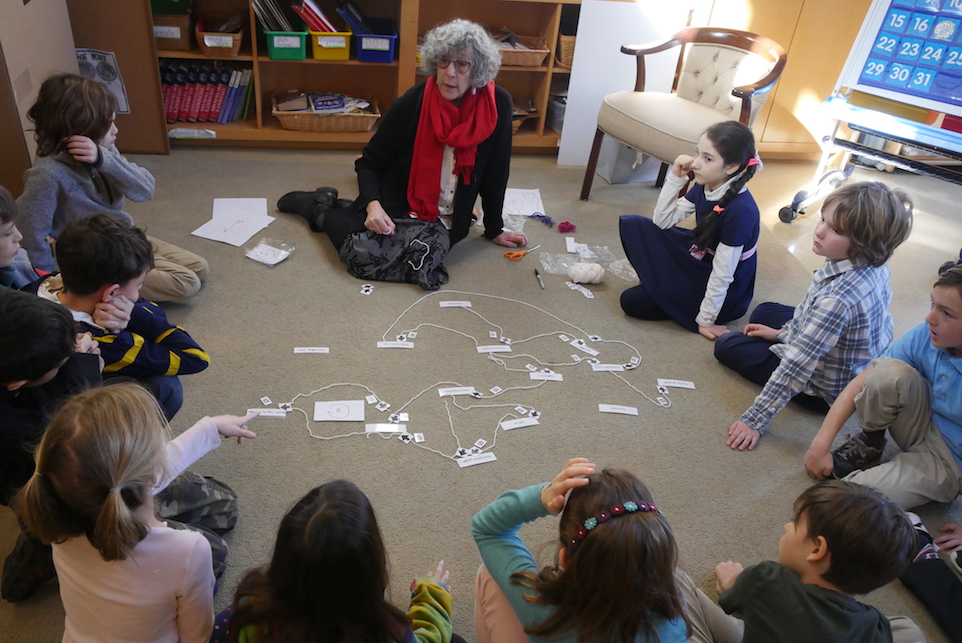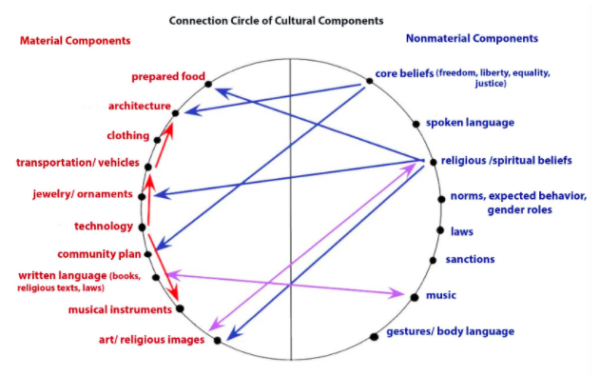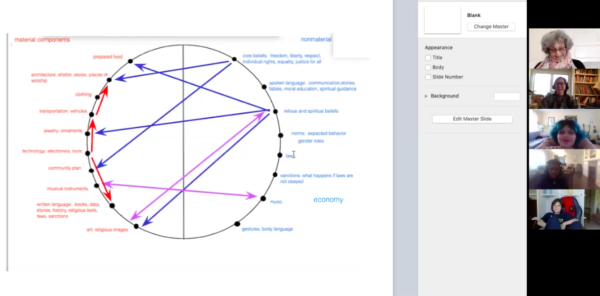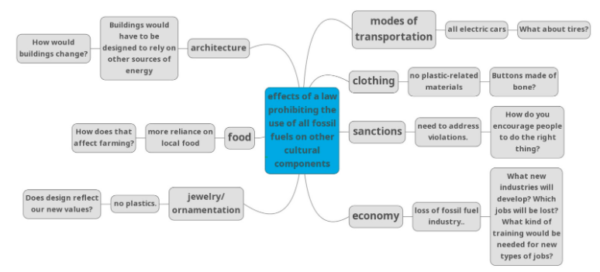Even as Willow students learn from a distance, they continue to practice Systems Thinking. What is systems thinking? “Systems thinking is essentially a philosophy,” says longtime Willow educator, art teacher, and systems thinking expert Carol Fontaine. “It’s a way of thinking that helps us recognize that we are all part of an interdependent system, and therefore the choices we make will have an impact on other parts of that system.”
Systems thinking helps students understand our complex and interdependent world, a discovery that helps them both better understand historical events and problem solve today. “With systems thinking, students are able to make wiser decisions,” says Ms. Fontaine. “It helps us discover the leverage points in an issue where we can create change. It also helps us anticipate unintended consequences so that we can solve problems without creating new ones.”
Fifth graders make connections
During distance learning, as part of their social studies curriculum, Willow’s fifth graders have used systems thinking to examine the interconnected components of culture. Students began by drawing a connection circle. A connection circle is a mapping tool used to identify interdependencies in a system. Ms. Fontaine had students list materials or physical components of culture on the left-hand side of the connection circle, and immaterial components on the right-hand side. Here are some of the components students came up with in live class meetings:
Students then began to draw arrows between elements on one side of the circle that would affect the other, or related elements on the same side of the circle. For example, a culture’s core beliefs would affect the community plan. “We discussed how these values affect how a community is organized,” Ms. Fontaine explained. “Are the homes in a circle, or is there a castle on a mountain and other homes at the base of the mountain? Are there segregated neighborhoods? Do some people have more access to water? These are all community plan decisions that are based on core beliefs.”
Students also identified reciprocal relationships between different elements. For example, the relationship between religious and spiritual beliefs and art or religious images. “Students discussed how religious beliefs might initially influence the types of religious images that were created, but then discussed how religious images could reinforce spiritual beliefs,” Ms. Fontaine said.
“This was just a start of the connection circle,” Ms. Fontaine added. “As we carried this project through to its conclusion, we saw that everything was connected.”
Understanding unintended consequences
Now that students understood culture as an interconnected system, Ms. Fontaine focused on unintended consequences and big-picture thinking. In live class meetings, she posed the following scenario to students: A new law prohibits the use of fossil fuels. What effects would this new law have on other components of this culture?
Students looked at all of the components of their connection circle, and their relationships, and began to identify the ripple effect of this law. As they discussed the impact of the law, questions arose which may not have had students not engaged in this deeper thinking. “Students looked at food, for example,” Ms. Fontaine said. “They discussed that if we are limiting the use of fossil fuels, there would be more reliance on local food. So how would that affect farming? What would happen to big agribusiness? What would happen to smaller farmers?”
“This is very high-level thinking,” Ms. Fontaine said. “Willow students are able to grasp the constructs of culture and distinguish its different components because they’ve been engaged with systems thinking since kindergarten. It has laid the groundwork for them to think bigger and truly see how everything is connected, making them better problem solvers with a deeper understanding of complex issues.”
Want to learn more about Systems Thinking? Ms. Fonatine recently hosted a virtual seminar for parents on Systems Thinking at Willow. Click here to watch it! You can also download our Systems Thinking eBook here.




